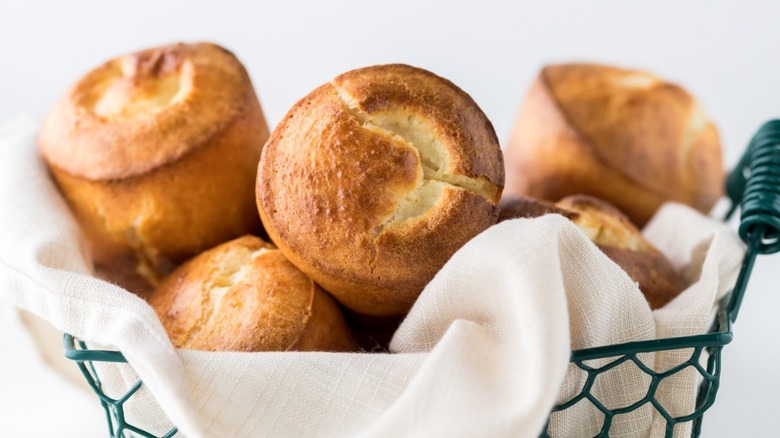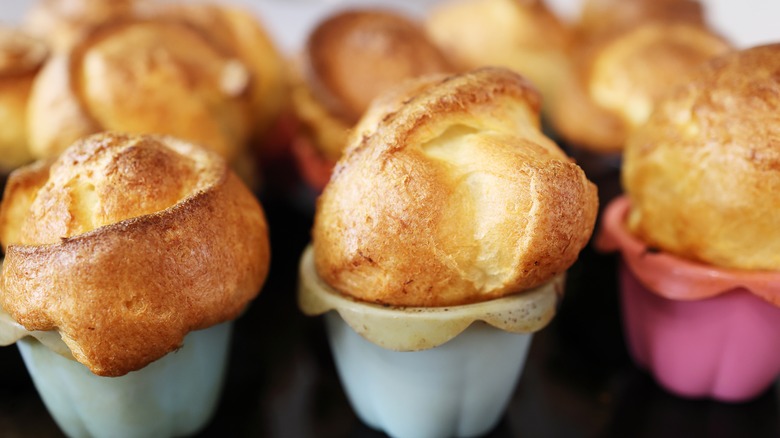Do You Have To Preheat The Pan When Making Popovers?
Popovers are the magical baked good that looks more complicated to bake than they are, making them an impressive and delicious addition to any meal. Tender and airy on the inside and golden brown and slightly crispy on the outside, popovers are the American equivalent of British Yorkshire pudding.
In the bread category, what differentiates a popover from a dinner roll is its signature hollow inside, making it the perfect vehicle to fill with soft scrambled eggs for breakfast, butter and jam for afternoon tea, or beef stew for dinner. While bread usually takes hours to proof and bake, popovers take 30 minutes. Unlike Yorkshire pudding which is primarily savory, popovers are versatile, made sweet or savory (per August Escoffier School of Culinary Arts).
Most bread recipes use commercial yeast to leaven the dough when baked, while popovers begin with a batter similar to crepes. Popover batter contains flour, eggs, butter, salt, and milk. Although they can be made in greased custard cups or a cupcake tin, a special pan for popovers enables them to grow tall. The tins contain six nonstick cylindrical cups, deeper than a traditional cupcake tin. The cups are spaced out and held together with rods allowing hot air to circulate the popovers, aiding in the magic that will enable them to 'pop.'
With simple ingredients, success is primarily determined by your technique. While high temperatures are needed to create sky-high popovers, is it necessary to preheat the popover pan before filling the cups with batter?
Skip preheating the pans
A classic popover recipe doesn't use yeast, baking powder, or baking soda and relies on steam to leaven the batter and create the eggy, hollow inside. While it looks like magic, science makes the batter pop over the pan. As the eggs cook, they release steam, forcing the batter higher like a hot air balloon. The gluten in the flour allows the batter to stretch, holding in the giant air bubble until the proteins set, forming the size of the popover. The quicker the batter can convert liquid to steam, climbing up the sides of the tin, the higher the popovers will be (per The Spruce Eats).
There is some debate regarding whether to preheat the pan. While cooking schools like August Escoffier School of Culinary Arts believe a preheated pan is critical for lofty popovers, arguing the batter gets a jump start, some baking experts like Cook's Illustrated disagree. The outlet tested different formulas and methods to achieve the best results, judging recipes based on how high the popover grew, if the exterior developed a nice crust, and whether the popovers were deflating.
Instead of preheating an empty pan, Cook's Illustrated suggests heating the milk to 120 degrees to create a warm batter. The warmer the batter, the quicker it will create steam. The warm batter is added to a cold, lightly greased popover pan. Lightly greasing the pan allows the batter something to grip as it climbs the sides of the cup.

